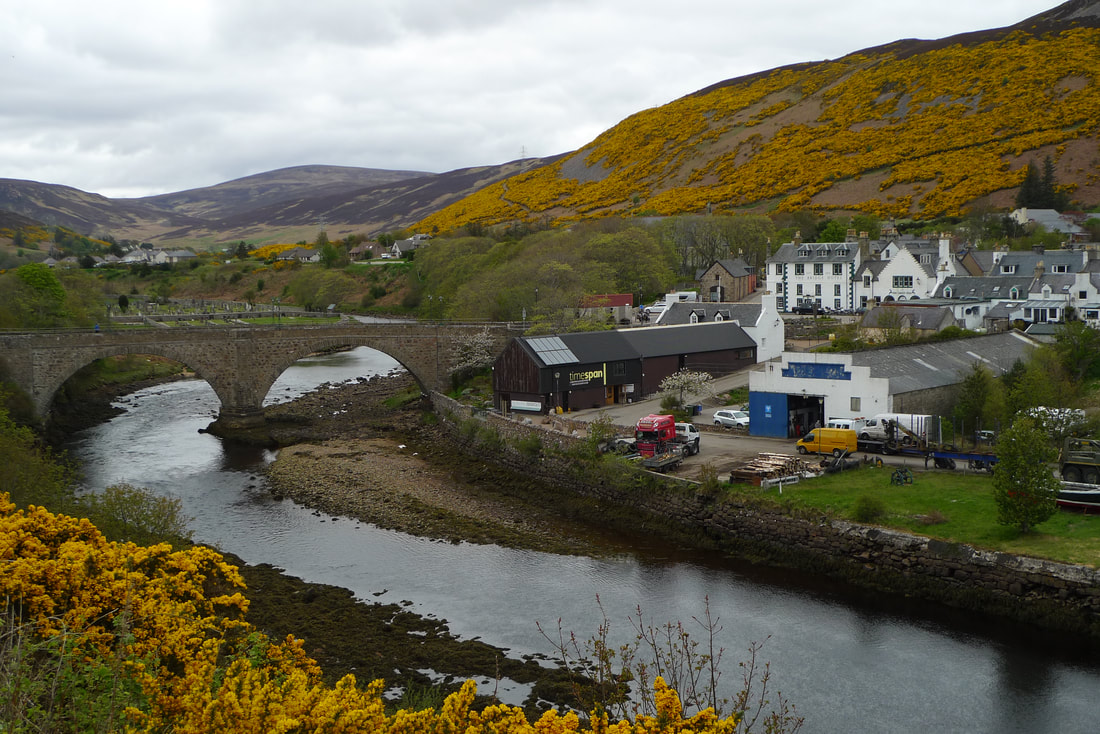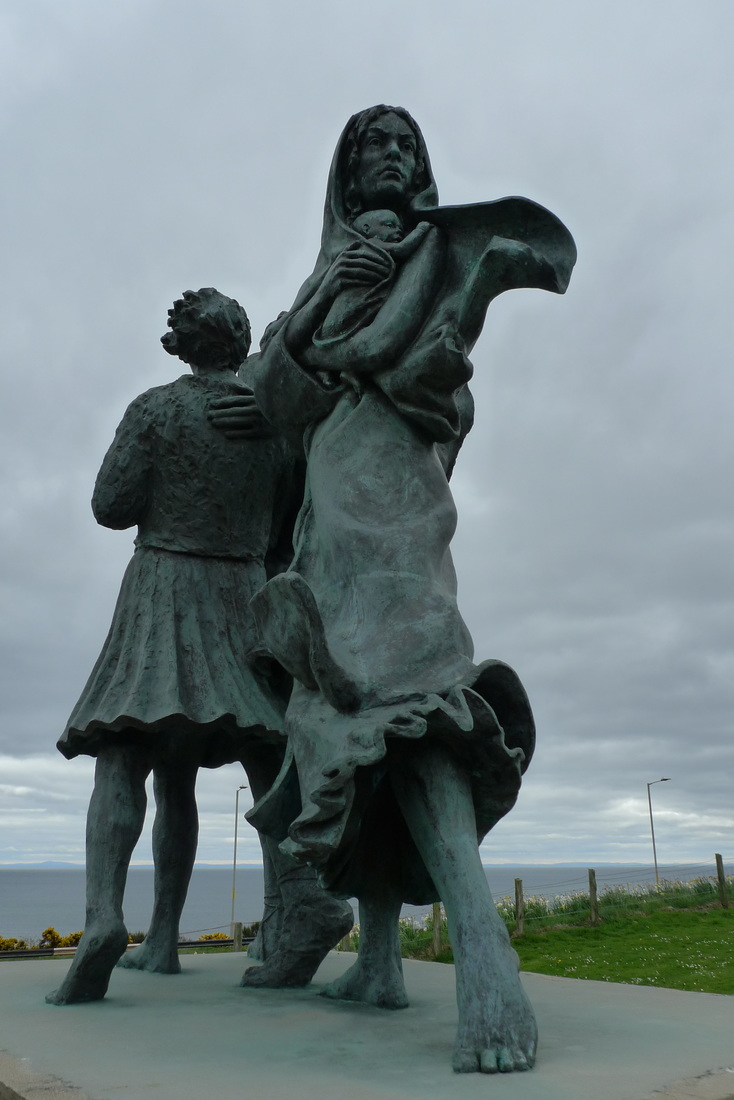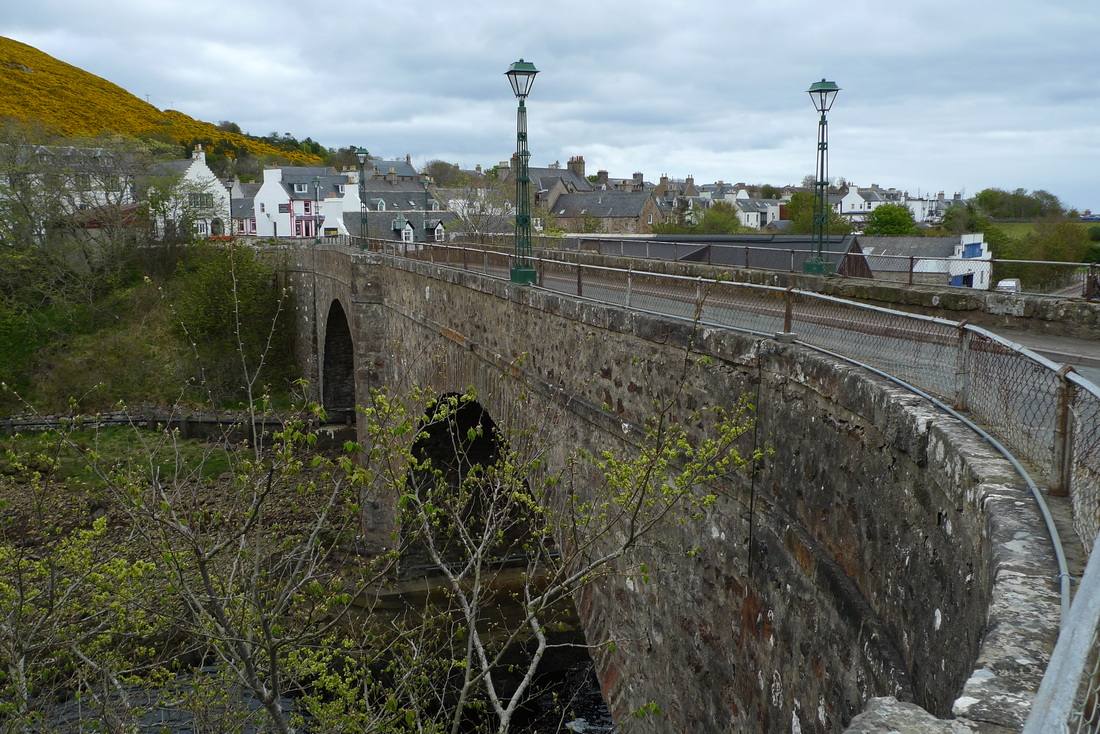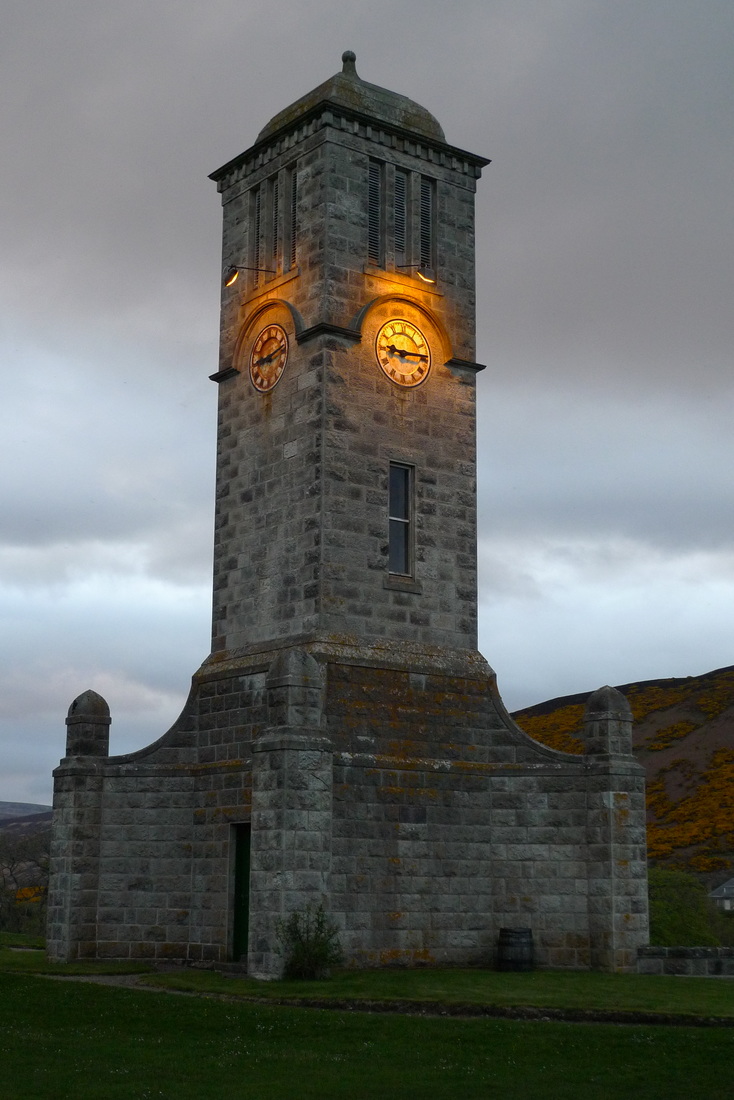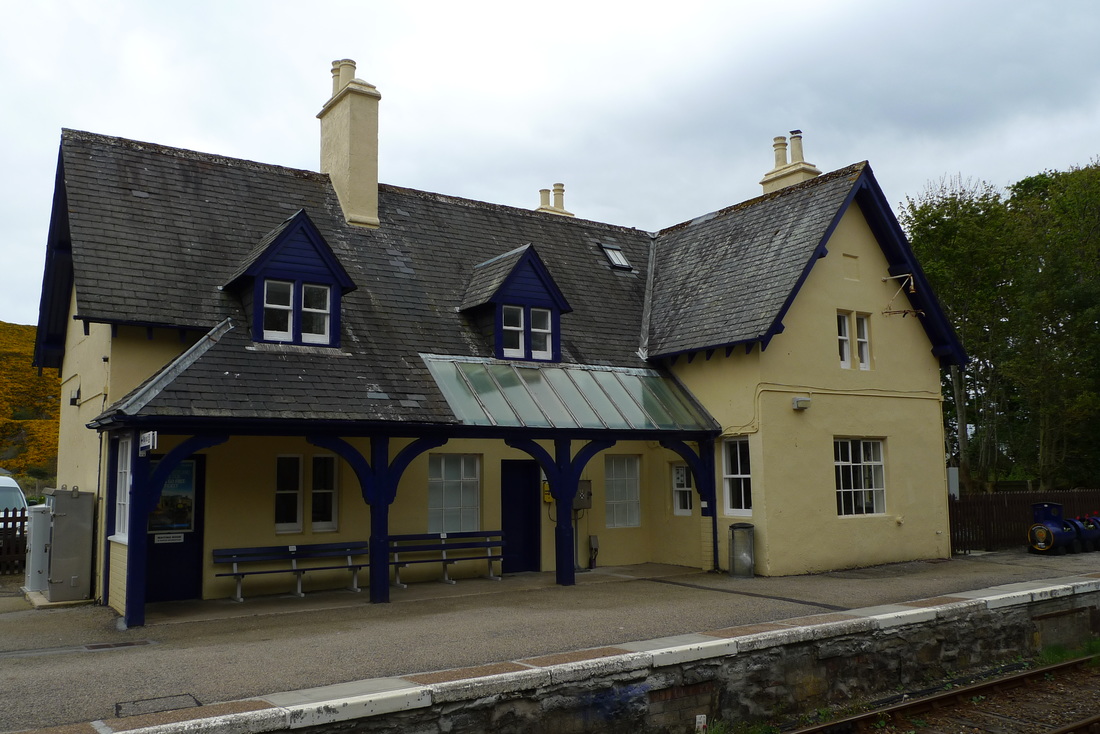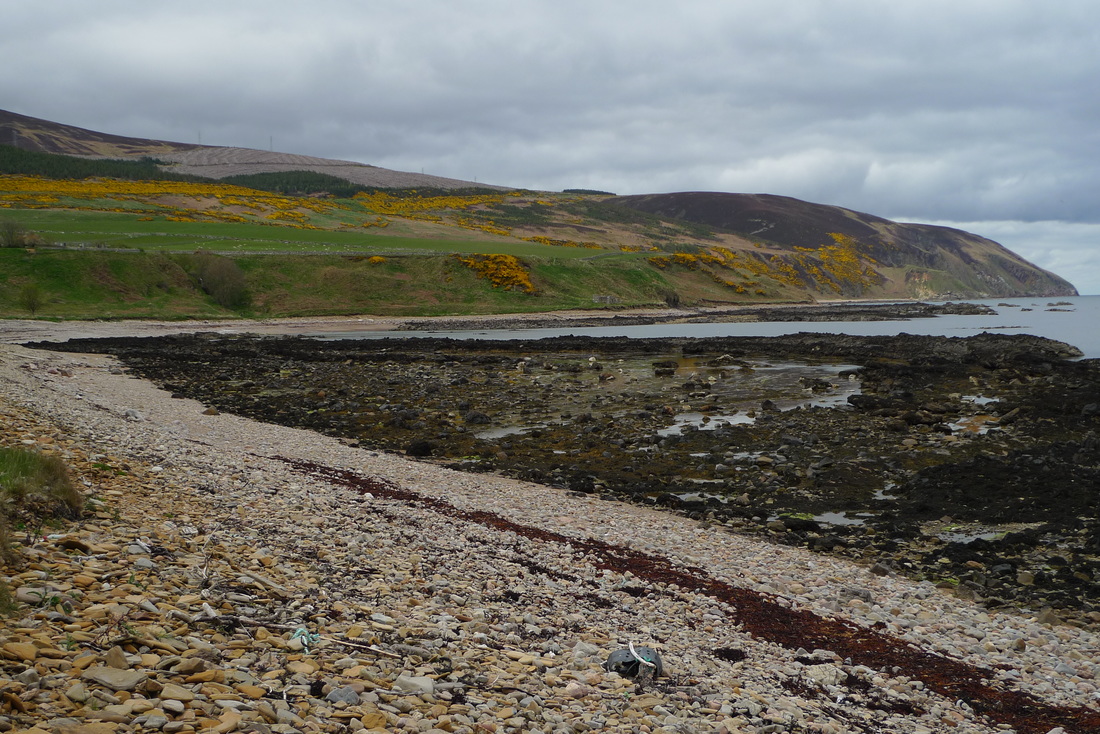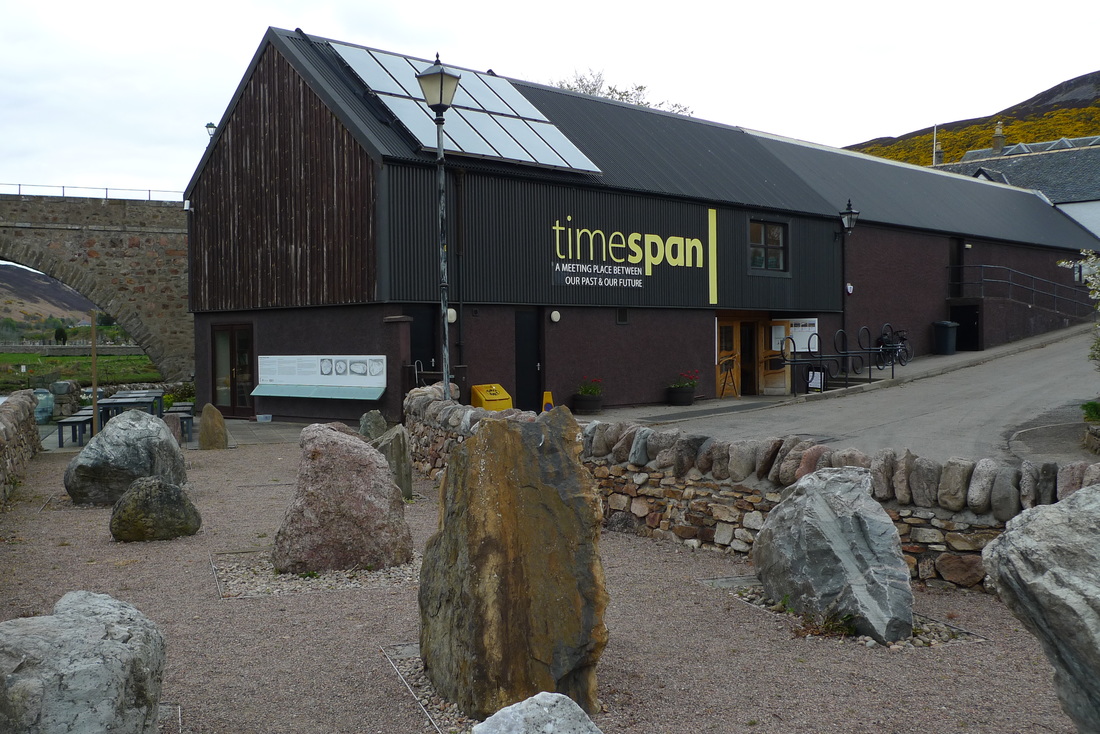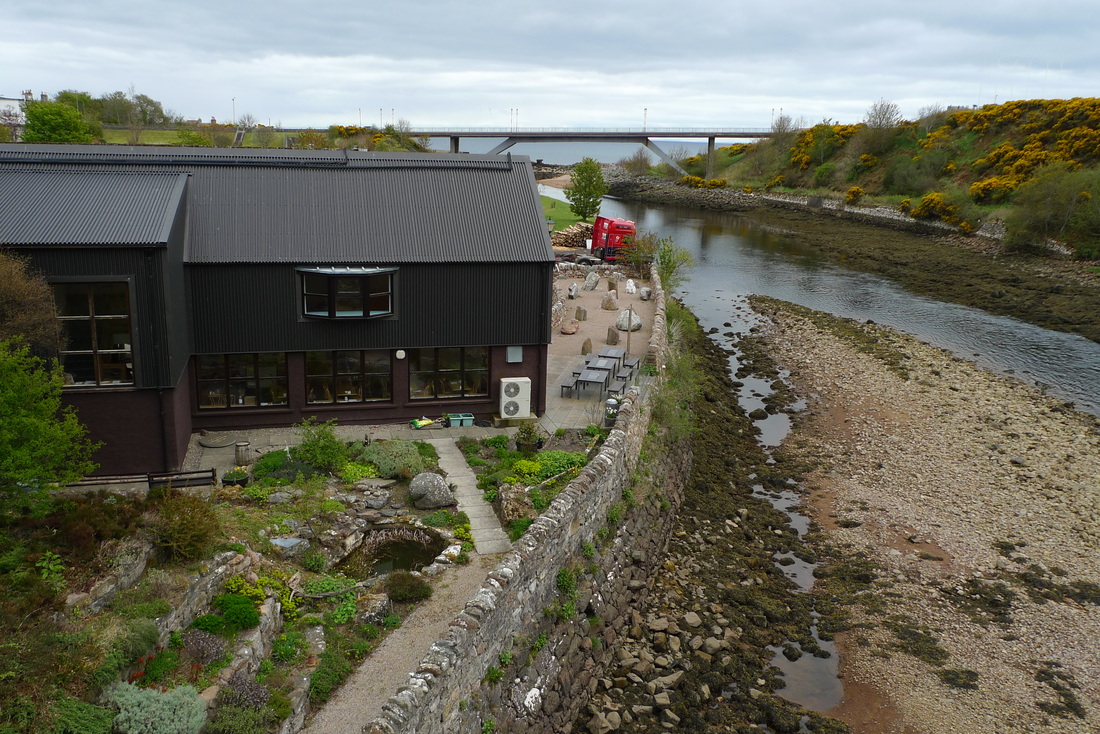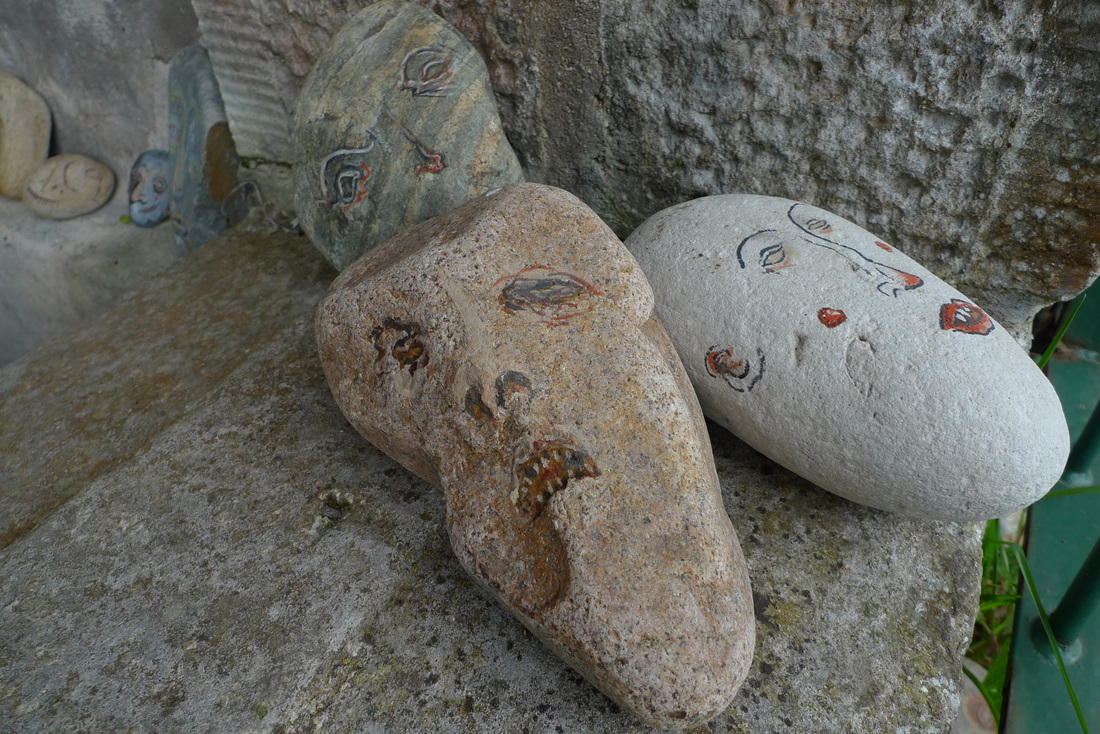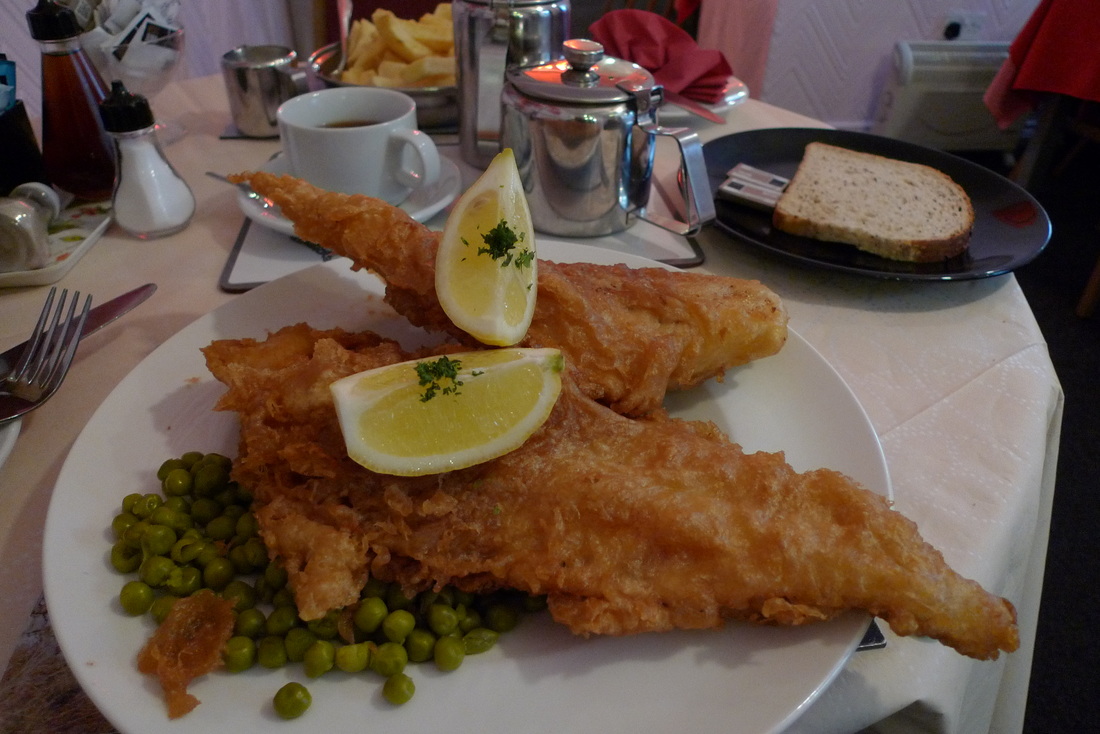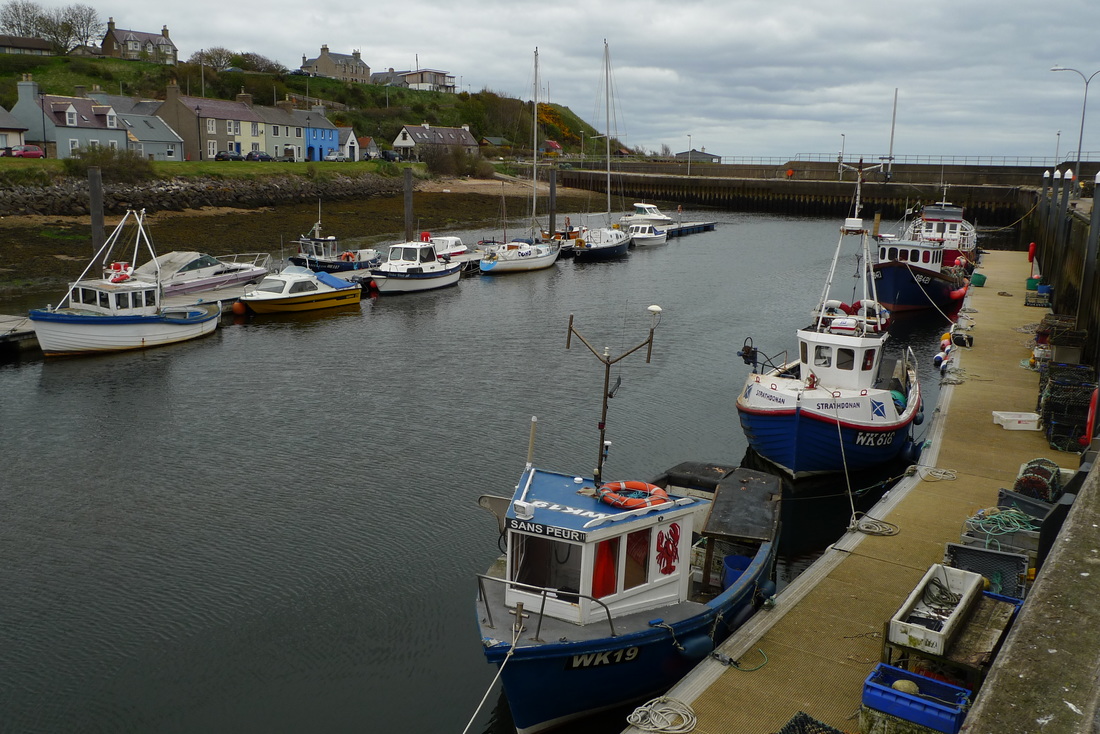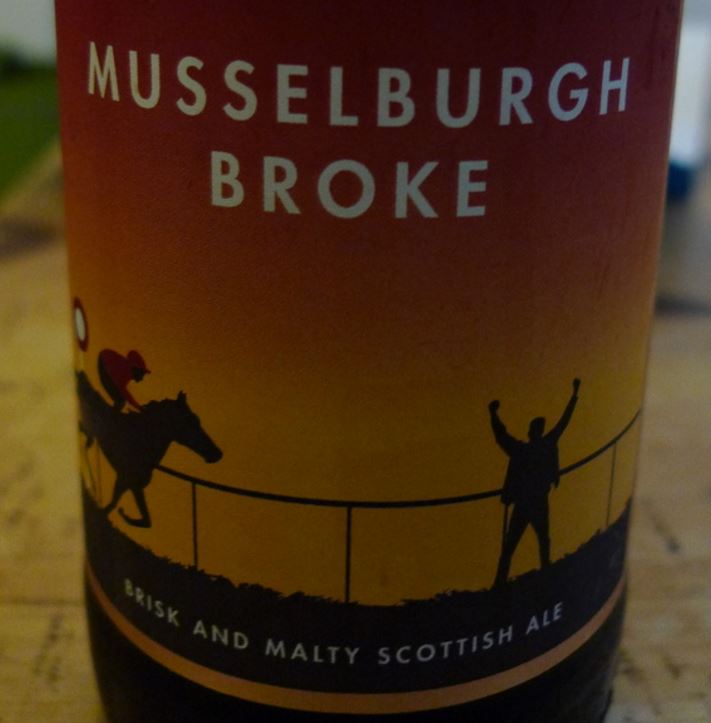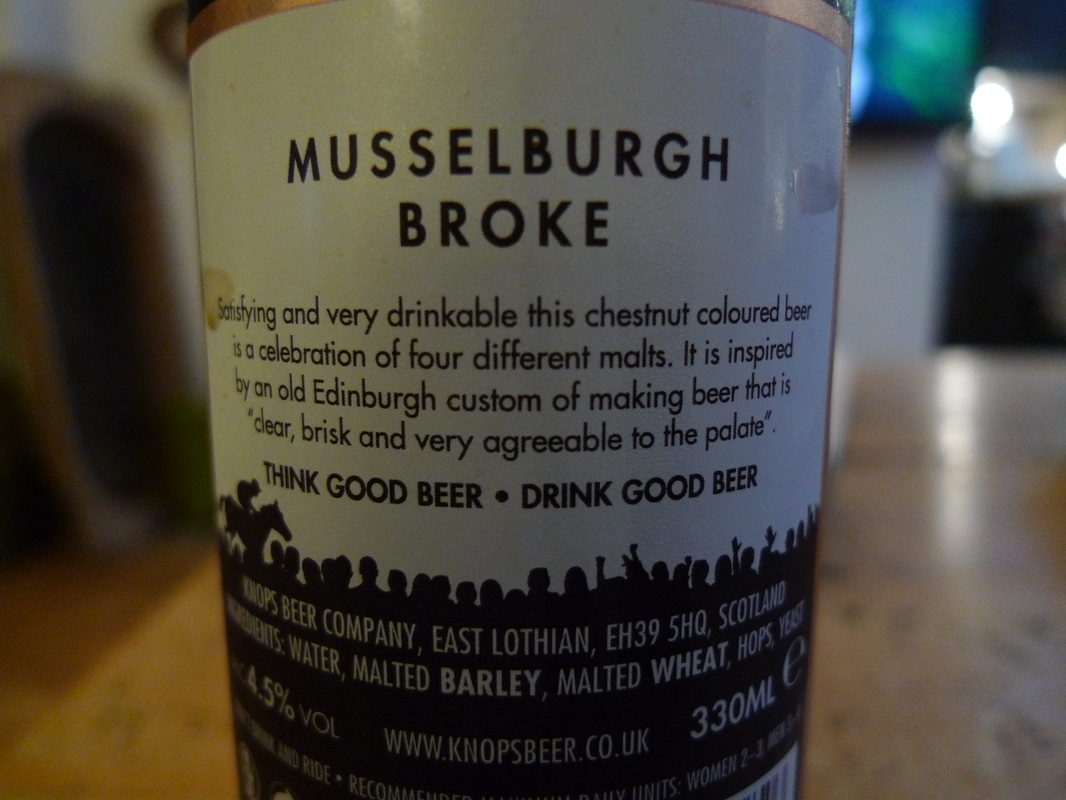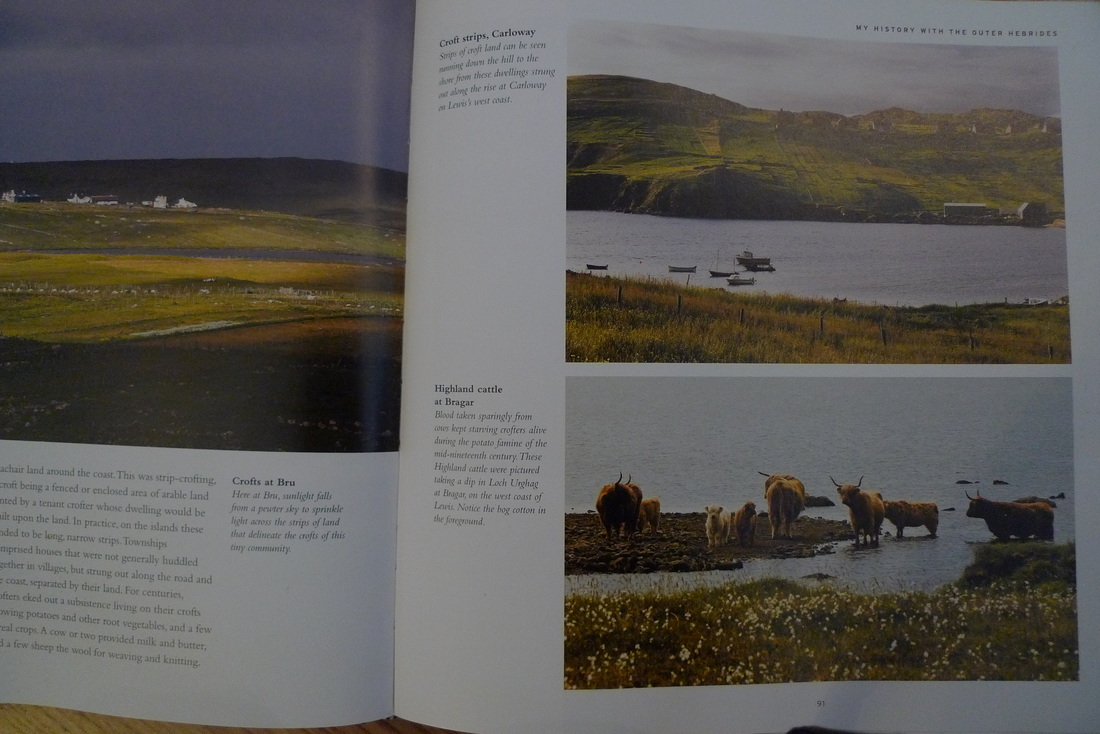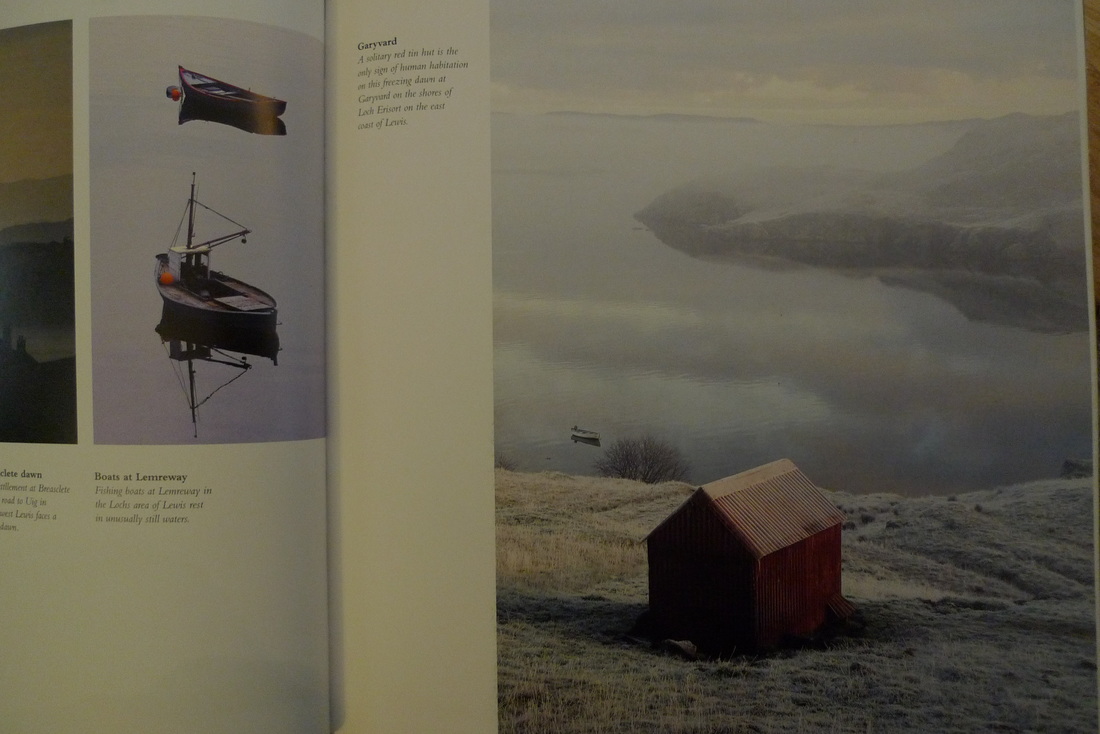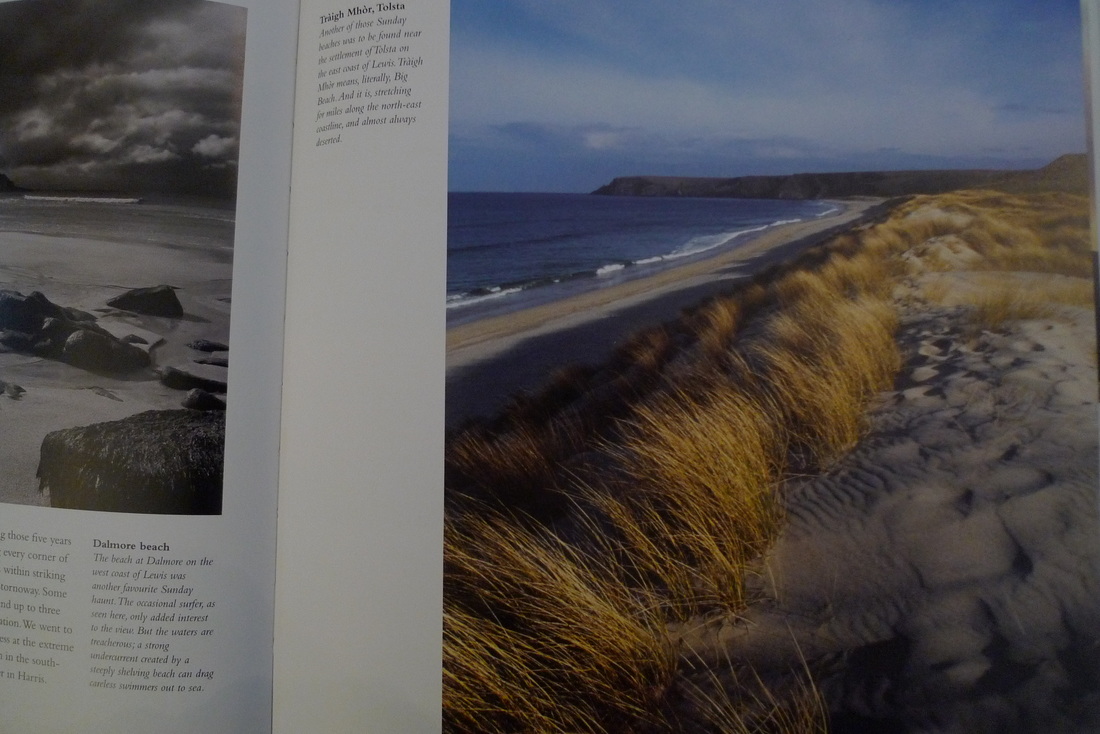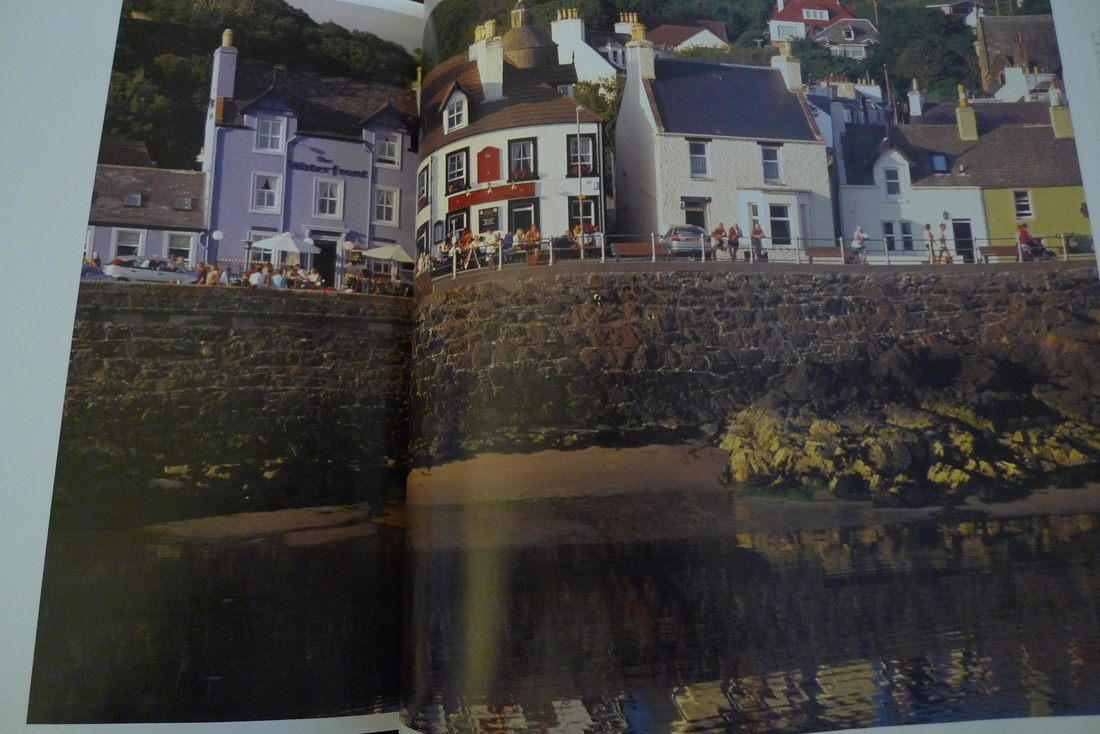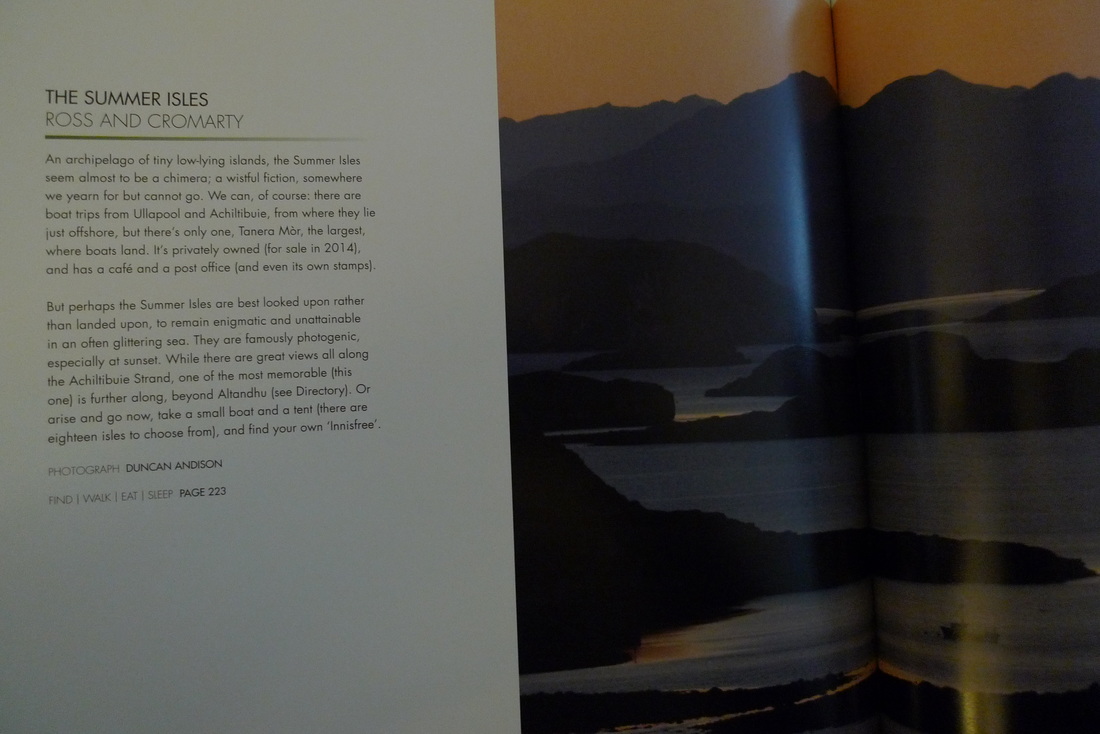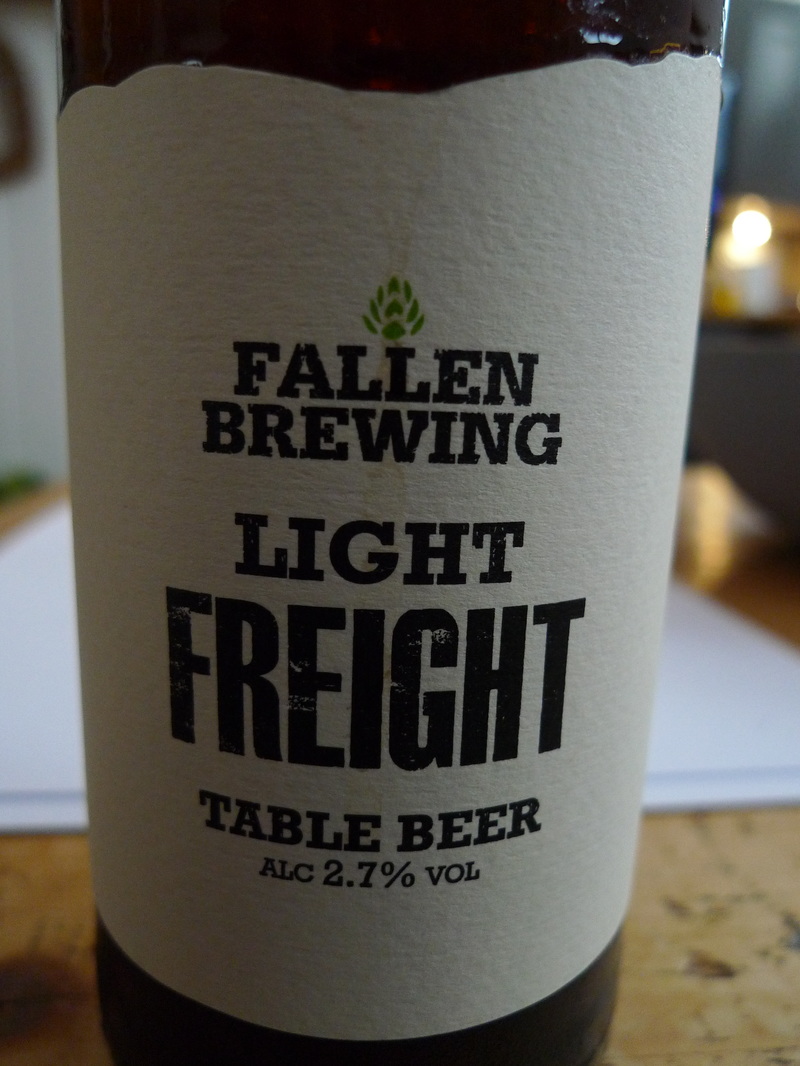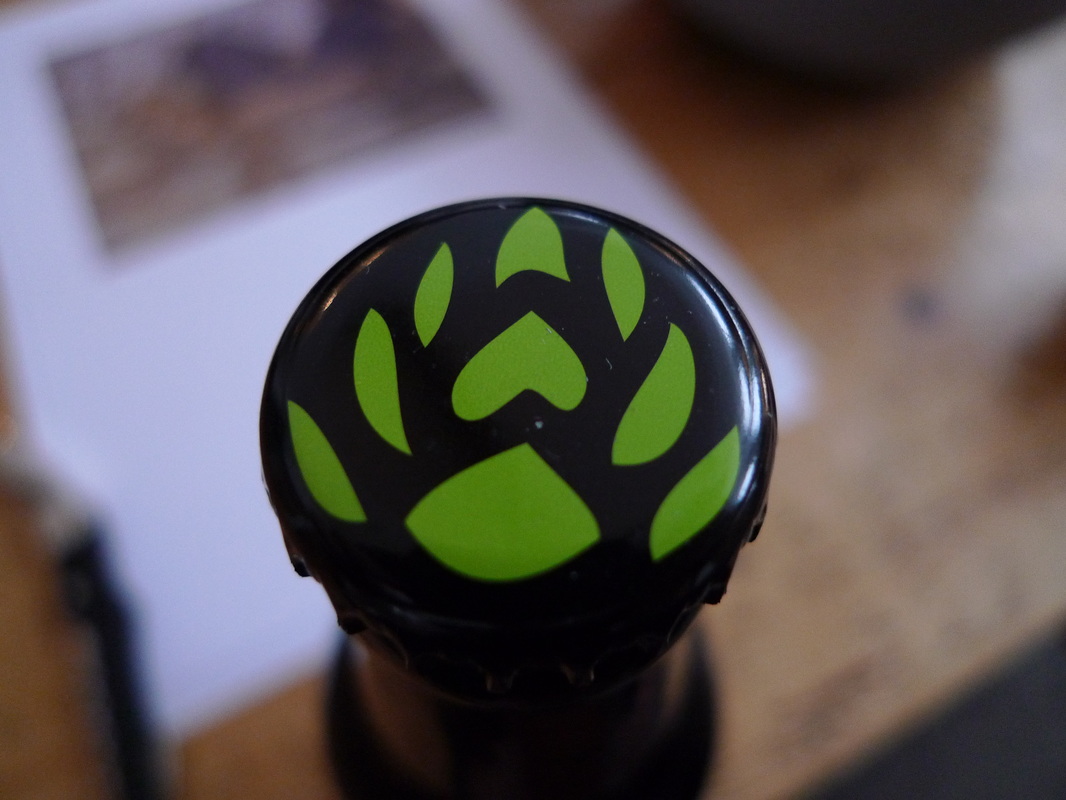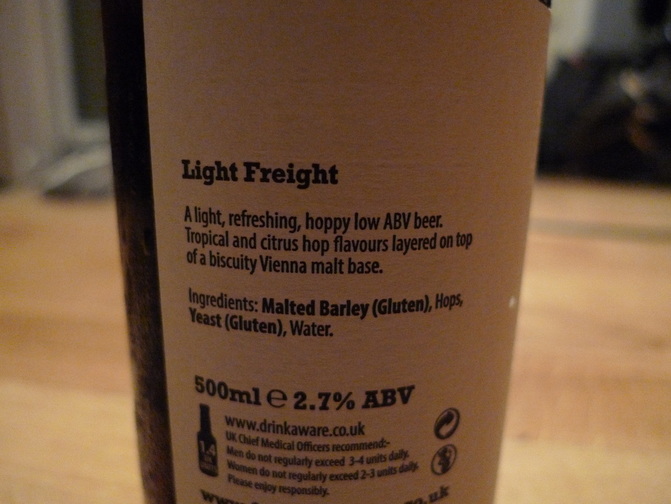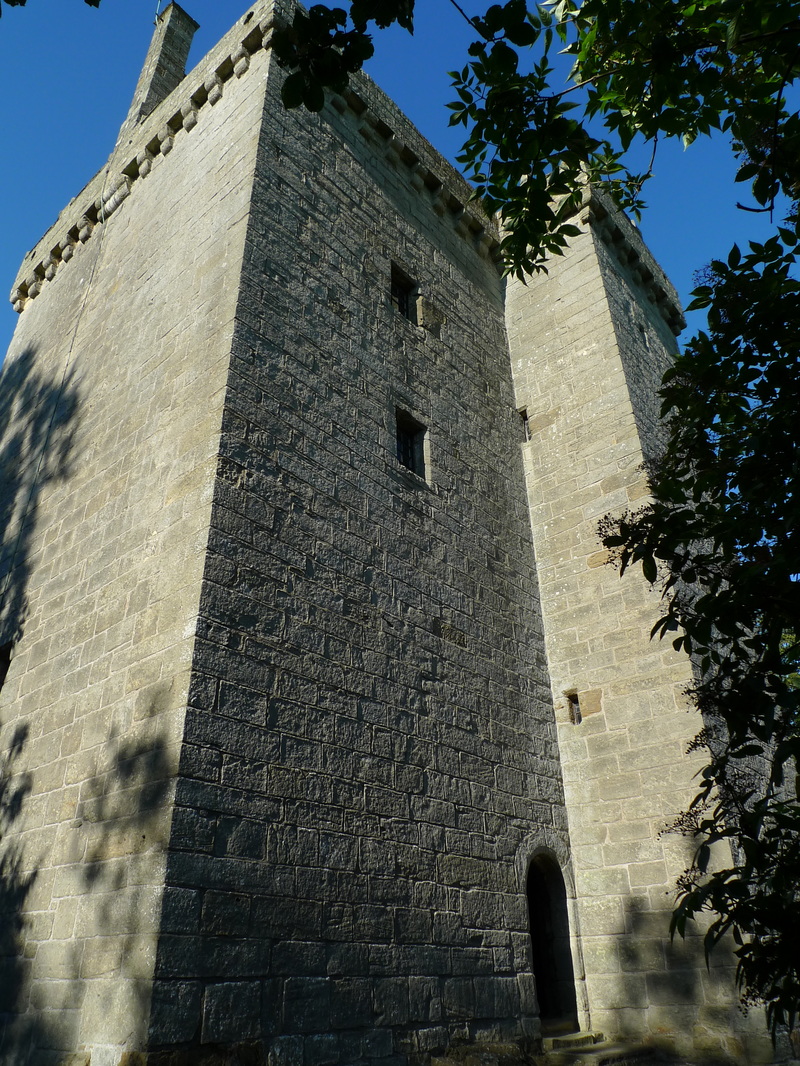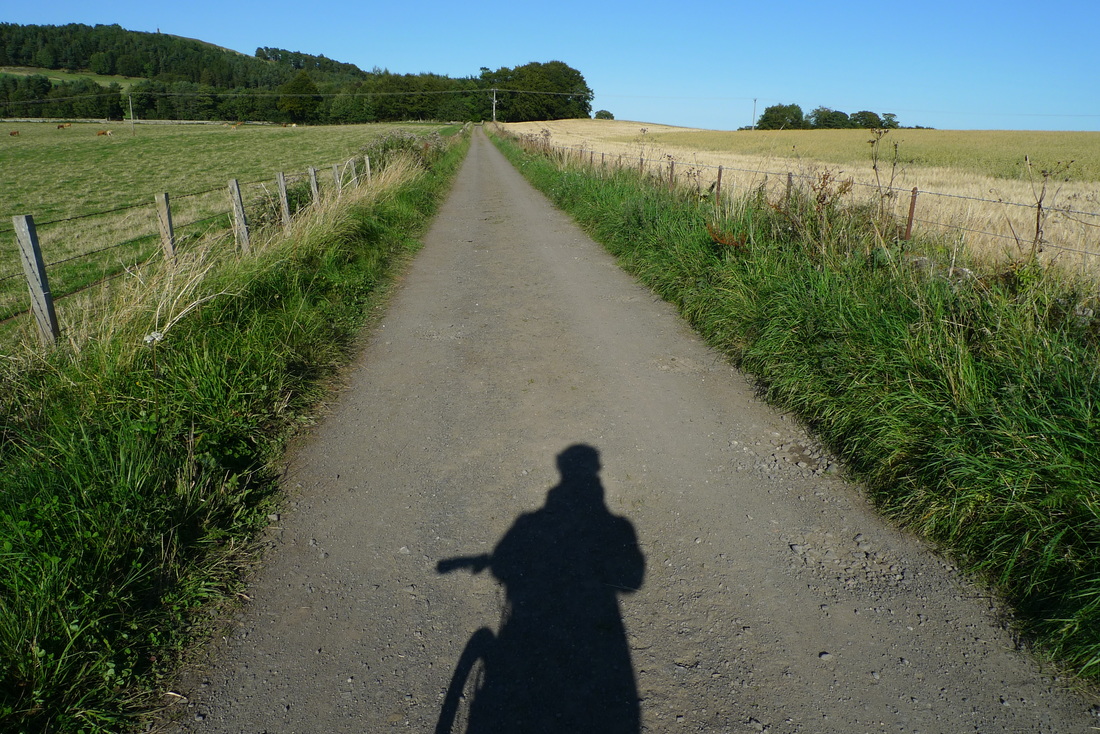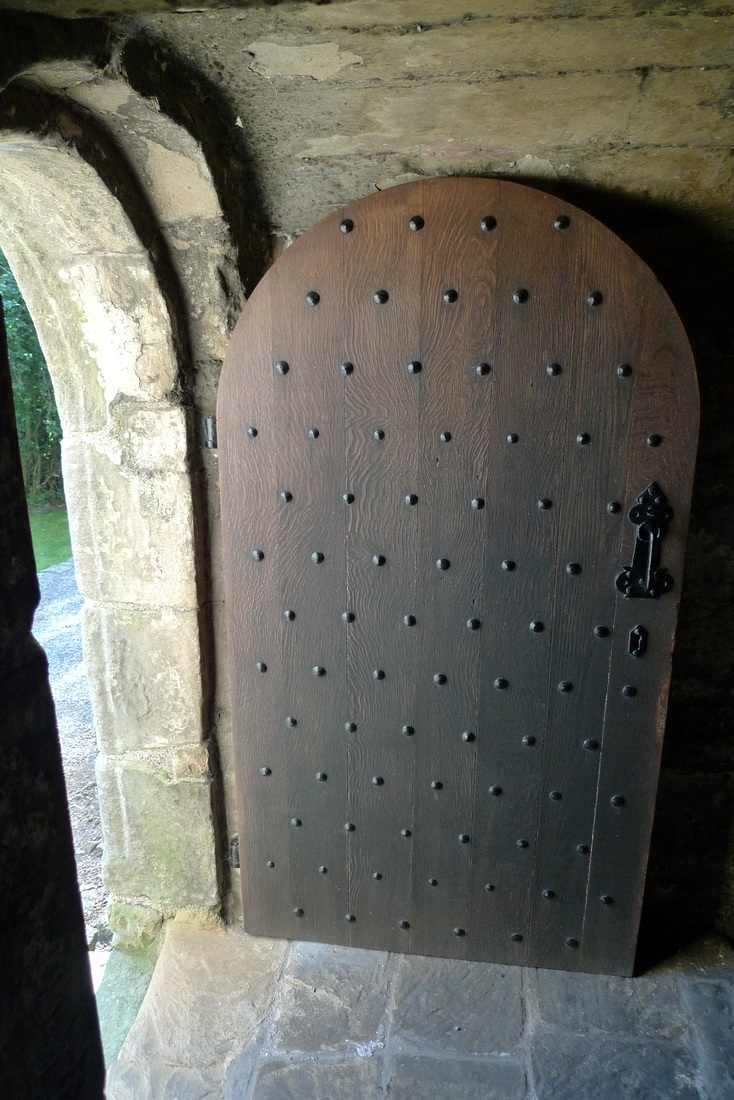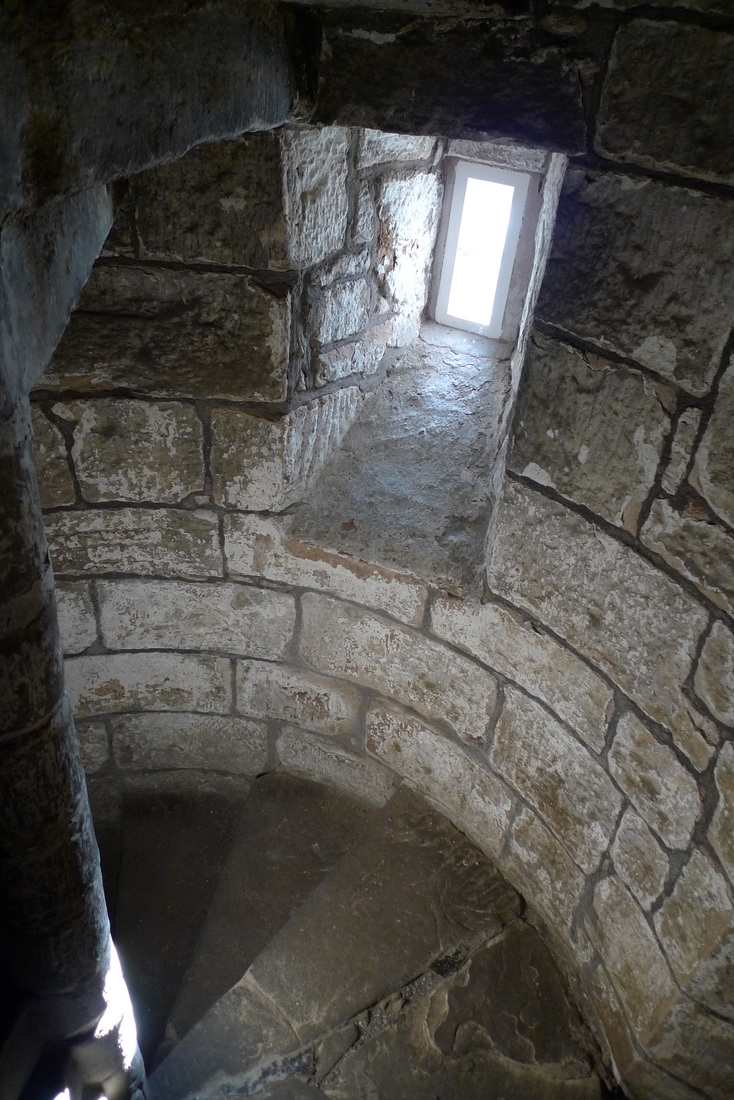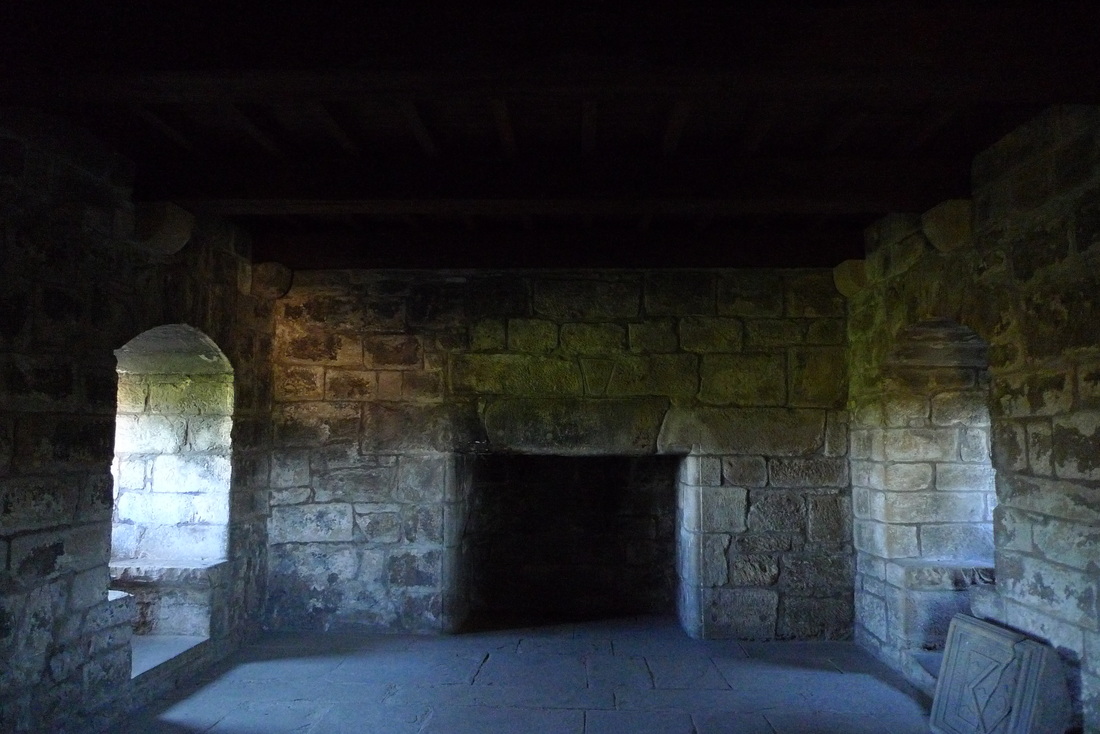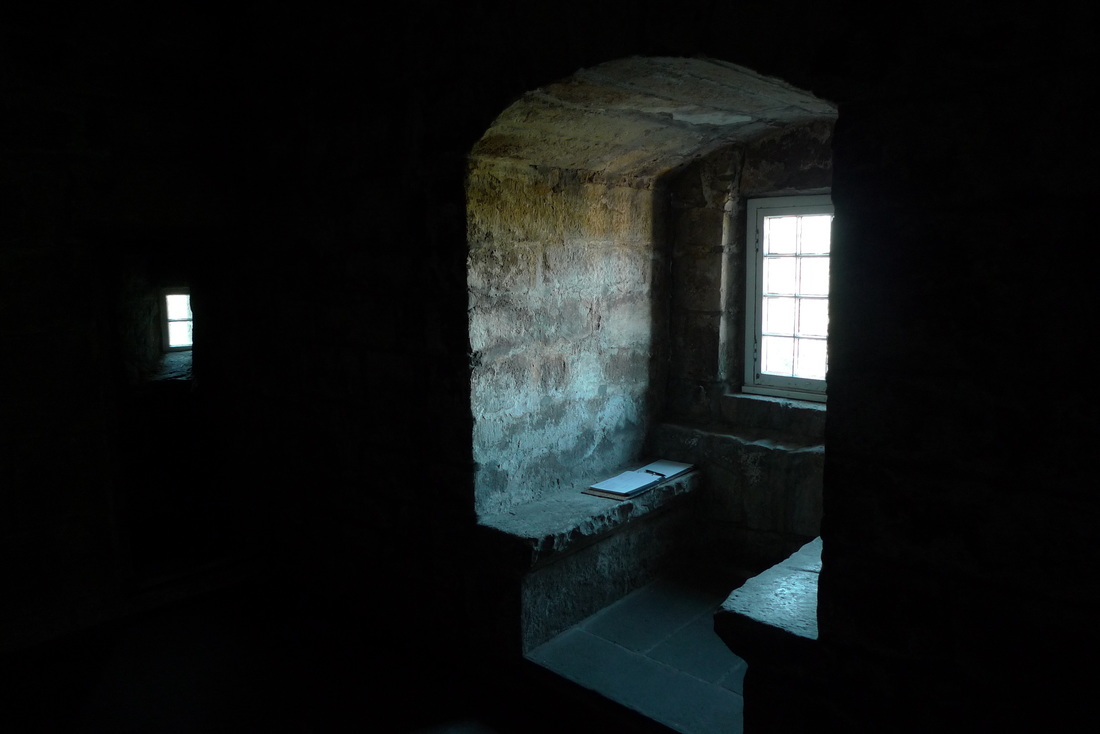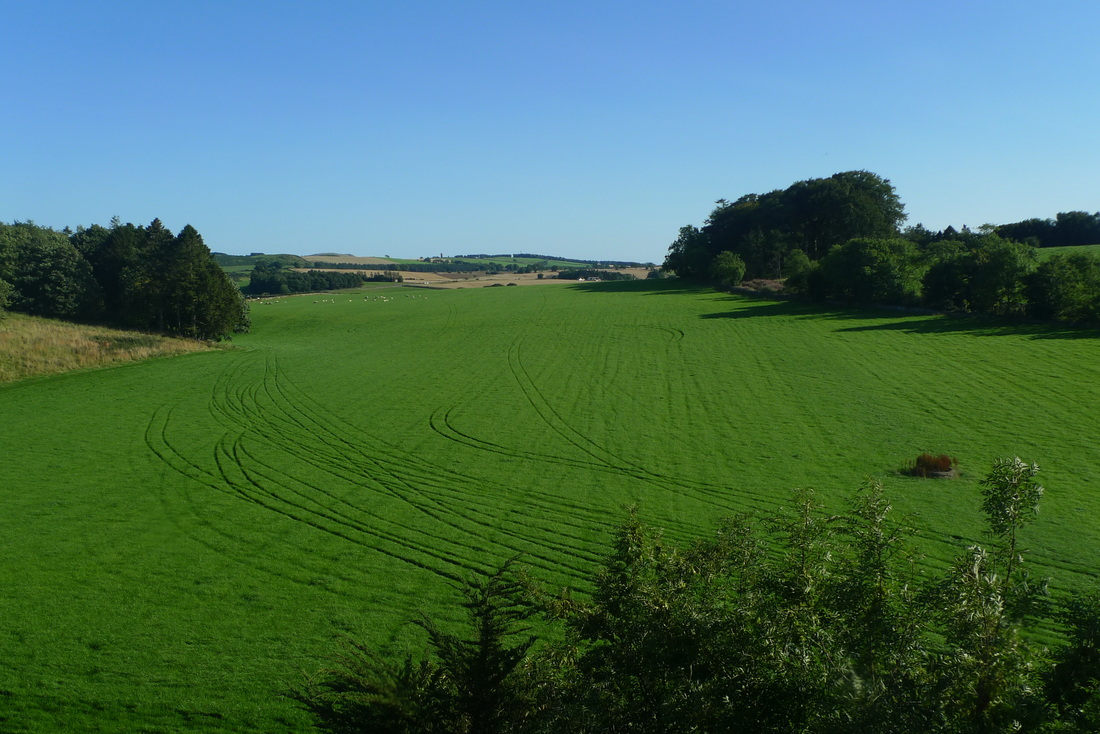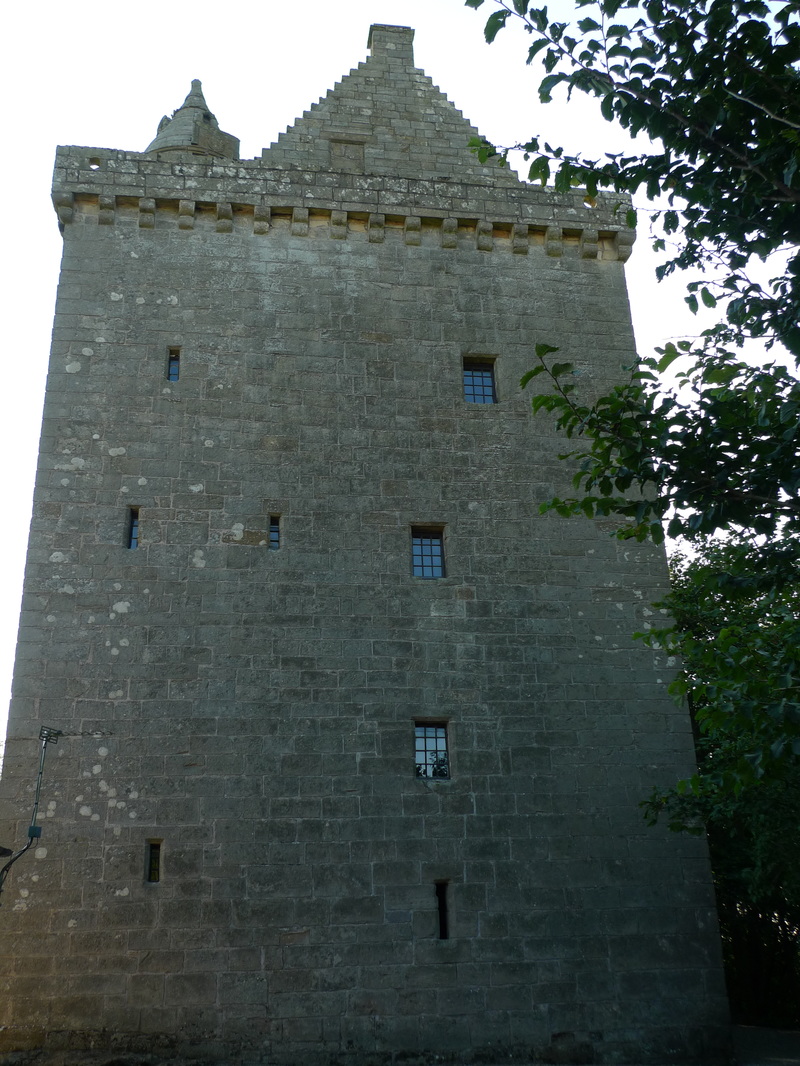|
Helmsdale, 68 miles north of Inverness, makes a good starting point for cycling journeys through the remote Strath of Kildonan. It is a pretty village, located next to a river and the sea, with hills of Gorse that turn bright yellow in the spring. A bronze statue commemorating the Highland Clearances, a coastal walk and fascinating museum with superb cafe are among the things to see and do in the village.
1. The Emigrants Statue
Look at the faces on this sculpture. They tell a story, they capture the emotion of people forced to leave their homes and make a new life overseas. The Highland Clearances resulted in the forced eviction of thousands of people from the land to make space for more profitable sheep farming.
The 10 foot tall, bronze statue, features a father heading towards the sea. He has a determined look on his face, knowing he has to go. His son looks up at him, looking frightened. The mother is facing the opposite direction, towards the hills, symbolically where there home was. She has a baby wrapped in her shawl. I imagine she is hesitant and wondering if leaving is the right thing to do for her child. 2. Cross the Thomas Telford bridge
Thomas Telford, the famous Scottish engineer, built the bridge that crosses the River Helmsdale into the village. The A9 road used to run this way until a modern crossing was built in 1970, which also resulted in the destruction of the ruins of Helmsdale Castle. On a positive note this does mean that the Telford bridge offers a tranquil entry into the village. If you arrive by train you will walk or cycle into the village by crossing this bridge. You don't need to worry about traffic here and can enjoy the view in peace.
3. Listen to the Clock Tower
The clock tower has a gentler version of the Big Ben chimes. Helmsdale is so peaceful that the chimes can be the only sound of human existence, particulary in the evening. The clock faces are lit at night, creating a magical atmosphere with the backdrop of dark, brooding hills.
The tower sits on a hillside that gives superb views over the village. It was built in 1924 to serve as both a landmark for the fishing boats and as a war memorial. It is quite moving to think that the war dead are honoured each time that the chimes are sounded. In this short video I love that you can hear sheep and birds between the chimes, evocative of the peacefulness of Helmsdale.
4. Sit in the First Class Waiting Room
The 1871 train station was restored in 2013 after being boarded up for many years. You can go inside the original first class waiting room where there is a fireplace, antique railway desk and information about the station. There is even a self-serve book exchange. You can stay in the station as the rest of the building is self-catering accommodation. If there is nobody home you might be able to peek through the window and see the comfortable living room with wood burning stove.
5. Coastal walk to Navidale
This is one of those walks where you want to keep going and see what is around the next headland. Behind you is a hill that is a chorus of songbirds. In front of you is the sea and the occasional squeal of an oystercatcher. During my visit the sea was incredibly still, with barely a ripple. The pebbles on the beach have enormous variety of colours and patterns. I exchanged greetings with a local man carrying driftwood, perhaps to decorate his cottage with. The walk begins to the east of the harbour and if you go all the way to Navidale the distances is about 1.5 miles.
6. Timespan
This museum explores the the history of Helmsdale with displays and objects, including a recreated croft house, shop and blacksmith's forge. There is a strong focus on the Highland Clearances. In 1791 Kildonan Parish was home to 1365 people and 5040 sheep, by 1840 there were 18,000 sheep and only 257 people living there. For me the most poignant object in the museum is a broken bowl, found on the cobbled floor of a collapsed longhouse in 2013. The fact that the shards of the bowl had not been cleared away is indicative that it could have been broken during the upheaval of the family's removal from their home.
7. The River Cafe at Timespan
The cafe's windows look onto the gardens, the River Helmsdale and the Thomas Telford bridge. There is no trendy shabby chic decor in here. The focus is on the food. A card explains that everything is sourced locally, such as crab and salmon from a Helmsdale fisherman. The herbs come from the garden. During my visit the blackboard at the entrance stated the soup of the day was "viking turnip", so I gave it a try. I never knew you could make a turnip taste this delicious until I had this heavenly soup.
8. Walk to Saint John's Well
It is only a short walk, 200m, along the river bank to this well. It is a pleasant path through the trees. The well is dedicated to St John the Baptist and inside it there is a curious collection of pebbles with painted faces.
9. Go Back to the 1970s at La Mirage Restaurant
The interior of this restaurant is deliberately kept in 1970s style in honour of the original owner, Nancy Sinclair, who was a good friend of Dame Barbara Cartland. Cartland, famous for her flamboyant style, was a romantic novelist who wrote about 700 books and took holidays in Helmsdale.
This is essentially a fish and chip shop, but a very good one that has received many accolades and worldwide recognition. I ordered the 'special fish tea' and my jaw dropped at the appearance of two pieces of fish, peas, a separate bowl of chips, bread and butter and a pot of tea. It was delicious, but there was no way I could finish it. 10. The Harbour
Helmsdale was a product of the Highland Clearances. It was created to provide alternative employment, mainly fishing, for people evicted from the land. The harbour still has a fishing fleet, but nothing like the heydays of 1816-1821 when the herring fleet grew from 20 boats to 200. It is hard now to imagine the street lined with the hustle and bustle of cooperages and fish gutting yards. This is now a pleasant place for a stroll, looking at the boats, the lobster pots and row of colourful houses on Shore Street.
9 Comments
A beer brewed in East Lothian with a malty taste. If you are doing the cycle route from Edinburgh to Musselburgh and would like a local beer after your ride then this is the one.
Knops Beer Company was started in 2010 and has a brewery within the Archerfield Estates, near the villages of Gullane and Dirleton. I like the picture on the bottle of the beer. It depicts the famous Musselburgh Racecourse and the name of the beer gives the impression that it is to do with losing money on a bet at horse racing. However, the story behind the beer is nothing to do with horses. Back in the day a brewer's drayman accidentally spilt a large amount of beer from one of the casks. He was worried about his boss finding out so filled up the cask from a stream on the road to Musselburgh and delivered it to a pub where he hoped that nobody would notice. When he returned to the pub later the landlady told him that it was the best beer she had ever tasted and her customers loved it! She described it as "brisk". The drayman then told his boss about the accident and the unexpected result, so the brewer started to produce the new ale and a drink with this character became known as "Musselburgh Broke." The malt taste is quite strong, but the gentle carbonation and a slight sweet taste makes it refreshing to drink.
If ever there was a book to make you want to visit the Hebrides this is it. A coffee table book filled with beautiful and evocative photography. The stunning beaches of the islands are here, as are the hills, churches, fields, animals and cottages. You will feel like you are travelling these islands as you leaf through the pages.
The Hebrides are a group of islands located off the northwest coast of Scotland. Peter May produced a Gaelic-language television drama set on the islands and wrote suspense thriller books. The Lewis Trilogy, which are set on the islands. Many of the photos in the book are related to locations that inspired May in his novels and the television series. The text of the book focuses on May's relationship with the islands during his time filming and writing and there are passages quoted from his novels.
May writes passionately about the islands and it is interesting to read about the locations that feature in his novels, particularly if you have read the books. For me, it is the photography that makes this book so special. David Wilson captured these images and I could pour over them for hours and hours.
These photographs transported me to the islands. I liked that it was not all landscape photography, but that other subjects, like abandoned houses, rusting vehicles and cemeteries feature. These things are as much a part of the islands as the beautiful scenery.
If you are looking for a coffee table book to inspire journeys to the Hebrides or just to reminisce about your travels on the islands this book is perfection. You can buy it on Amazon by clicking on this image:
This is a beautiful and inspiring book. Stunning photography alongside punchy writing. This is a book that you will want on your coffee table. The best of Scotland is presented gloriously.
Peter Irvine writes the bestselling guidebook Scotland The Best and has produced many of Scotland's highest profile events, including Edinburgh's New Year festival. He has travelled all over Scotland and his opinions on the best things to see and do in the country are highly respected.
In this book he has selected his 100 best places in Scotland. Each entry is presented with a stunning photograph and some information about the place and why it is special. The photography is incredible and the writing high quality. It gives you enough information about the place to entice you to visit.
This is the kind of book that will have you pouring over it on a regular basis to plan future trips. Once you see these photographs and read about the magic of these places you will want to go to all of them.
The rear pages of the book tell you how to get to these places and where to stay and eat. This helps you to plan your adventures once you have been inspired to visit. The only criticism is that the directions are for drivers and there is no help for those using public transport or bicycle, but you can always go online for that. I love this book and really recommend it to anyone who wants to travel in Scotland. It is beautiful and inspiring. Click on the image below to buy the book from Amazon:
Paul Theroux travels around the coast of Britain in 1982 and records his observations and meetings with local people. This includes a visit to Scotland and I was interested to see what my favourite travel writer had to say about Scotland.
It is very much a book of its time, perfectly capturing what Britain was like in the 1980s. Theroux travels at the time of the Falkland’s War and witnesses people’s reactions to it. He experiences yobs on trains, fights between mods and skinheads, grotty seaside guesthouses and a rail strike. He also finds beautiful coastal villages and dramatic scenery. It is a fascinating insight into how a visitor to the UK views the country. He noted that, although plenty of British writers produced books about travels in other countries, there were few outsiders who wrote travel books about Britain: “…it was a mystery to me why no one had ever come to Britain and written about its discomforts and natives and entertainments and unintelligible dialets. The British, who had devised a kind of envious mockery of other cultures, and who had virtually invented the concept of funny foreigners, had never regarded themselves as fair game for the travel writer.” Theroux shuns castles, stately homes and other traditional tourist attractions. He wants to discover the real Britain, so travels mostly by walking or using the train and talks to people he meets along the way. Cycling is discounted at a very early stage of his planning: “A bicycle was out- too dangerous, too difficult…” I hope that if he repeated his journey today he would find that things had changed since the 1980s and cycling would be considered viable. I think that cycling infrastructure has improved dramatically since the time of this book. The way that Theroux travels results in a very honest and real account. He does not miss out the bad bits and tells it exactly as he experiences it. This has led to some people describing Theroux as grumpy, but he is simply recording what he sees and hears and does not sugar coat it. He is my favourite travel writer for this reason. I love that he uses the conversations he overhears in pubs, on the street and in public transport to tell the story of a place. I was most interested in the author’s travels through Scotland, although this is a small part of the book (only 4 chapters). He takes the West Highland railway and recalls a passenger with a parcel of books that he held out the window of the train and a signalman took. The passenger explained that he heard about a signalman that liked to read, but his post was so remote that he had no access to books. Apparently it was common practice for people, on this train, to throw their finished newspapers out of the window as there would be somebody along the line to pick them up and read them. Theroux beautifully describes getting off a train at a rural station in Scotland: “There was something very disconcerting about leaving a train in the middle of nowhere. It was all activity and warm upholstery and then the clang of a carriage door and train pulled out and left me in a sort of pine-scented silence.” This is something I have done many times and I love it. I have often tried to find the perfect couple of lines to sum up the mixture of joy and apprehension when you get off a train at a little used station and I think Paul Theroux has done it perfectly. One of my favourite parts of the book was his journey on the post bus through Sutherland where he experiences rural life up close. He describes how the driver stops frequently to deliver items like milk and newspapers to isolated houses. I was pleased to read that Theroux loved Sutherland as it is also one of my favourite parts of Scotland: “…its mountains streaming with pale scree, its black valleys of peat, its miles of moorland and bog, its narrow roads and surfy coast and its caves. It was like a world part, an unknown place in this the best-known country in the world. No sooner had I left it than I wanted to go back.” I couldn't agree more. I really enjoyed this book, particularly because you can compare the Britain that Theroux experienced in the 80s to what Britain is like today. Although the part about Scotland is quite small it was impossible for me to resist finding out what my favourite travel writer thought about my country. You can buy the book from Amazon by clicking on the image below: Fallen Brewery is based in Kippen, about 10 miles west of Stirling. Light Freight is only 2.7% and has a lovely fruity taste. I found it easy to drink and rather delicious. The old Kippen railway station has been the home of Fallen Brewery since 2014. A railway theme can be found in the names of their beers, such as 'Just the Ticket', 'Local Motive', and 'Chew Chew.' The label on the bottle is a simple, rustic design. The bottle cap features the hop symbol of the brewery. Light Freight has a fruity taste. I could detect exotic fruits like mango and papaya. It also smells fruity. I loved the taste and I couldn't get enough of it. It is not overwhelming and not sweet like a Belgian fruit beer or a cider. There is a slight bitterness which probably prevents it from being too sweet. The aftertaste is hoppy with, I thought, a hint of mango. Very nice, very refreshing and at 2.7% a good one if you still have some cycling to do after a beer stop. On their website Fallen Brewery say that they supply beer to many pubs across England, Scotland and Wales. They also list some specialist retail outlets for their bottled beer, mainly in Glasgow and Edinburgh. I really enjoyed Light Freight and will look forward to trying some more of the brewery's beer.
Whilst visiting Hill of Tarvit Mansion you should also have a look at Scotstarvit Tower, located just across the road. It is free to enter and there are four floors of rooms to discover. My previous blog describes how to reach Hill of Tarvit Mansion using bicycle and train. Scotstarvit tower is across the road from the entrance to the mansion. Bicycle has an immediate advantage over car when accessing the tower. The farm track to the tower has no vehicle access or parking, but you can cycle right along that road and leave your bike outside the tower whilst exploring the inside. It is not a long walk, so if you are here with a car, you can park it at Hill of Tarvit Mansion and proceed on foot. A sign indicated that a key can be obtained from the private house next to the tower, but the door was already open during my visit. The tower dates from the 1500s. The most notable resident of the tower was John Scott a laird, judge, politician and writer. His most famous book was The Staggering State of Scottish Statesmen. A spiral staircase, with tiny little windows, connects all of the floors. The rooms are empty and there is not much to see, apart from the fireplaces and window niches with their stone seats. It was fun to go up and down the stairs and have a good look around the place. Unfortunately, the roof was locked, so it was not possible to get the fantastic views, but I did take this photo across a field from one of the windows. John Scott must have felt very safe in his tower. As I made my way through the rooms and up the stairs I could see how incredibly thick the stone is. It would be almost impossible for a would-be attacker to break into. How to get there
There is a map and directions on my blog about Hill of Tarvit Mansion. Scotstarvit Tower is across the road from the entrance driveway to Hill of Tarvit Mansion |
Categories
All
Archives
July 2024
|

